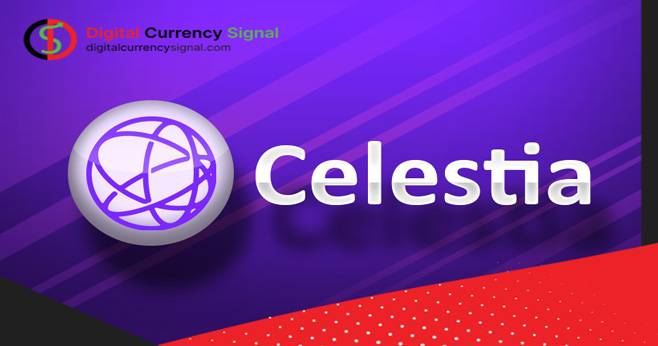The Celestia Network is the first modular network that separates the consensus and data layers from each other Celestia aims to improve the scalability and security of web applications Celestia does not have the same functionality as regular layer blockchains Its sole function is to organize transactions and check the availability of data In this article, we will first look at what the Celestia Network is, how it works, then look at the Celestia token, the development team, the roadmap, the collaboration and the investors of the project. Stay with us till the end of the article
Powered by Celestia Networks
Celestia is a minimal blockchain network that only subscribes and publishes transactions, but does not execute them. By separating the layers of consensus and application execution, Celestia modulates the blockchain technology stack and provides new opportunities for developers of distributed applications; It also allows independent blockchains to break away from the constraints of a unified structure and adapt to their needs and flexibility. Therefore, the introduction of new blockchains becomes easier.
Scalable solutions such as Optimism, ZKsync, and Starknet are already available. However, the availability of data for these scaling solutions depends on Ethereum’s unique network. The bad news is that Ethereum is still expensive and the gas price of the second Ethereum project is still high.
In contrast, most existing blockchains are monolithic. The main functions of blockchain, i.e. It is difficult to classify a monolithic structure. Celestia can do this by separating the main parts of the network.
Celestia Network Features
Distribution and performance
Celestia provides a removable consensus layer for developers to deploy the desired implementation layer on their platform. This provides more customization and better management for applications built on the Celestia platform.
Evidence of data availability
Celestia uses an encryption system to encrypt block data. Even a small sample of data is sufficient for verification. If the data is not entered correctly, the network will find out due to the anti-fraud mechanism.

Rollup for off-chain execution
Celestia is perfect for a scaling solution. The network performs off-chain transactions and relies on an underlying chain for consensus and data availability.
How does the Celestia network work?
The Celestia network can increase network utilization by increasing the number of users (light nodes). As long as there are enough nodes in the network to verify an entire block of data, Celestia remains secure. This means that as more nodes are added to the network and, for example, the block size increases without compromising security or integration.
Doing this on a traditional blockchain gives up decentralization because the larger the block size, the more powerful the hardware required to download and verify the data. Data availability is also necessary for sizing the collections. As such, they offer a better scalability option for Celestia.
What is data availability on Celestia’s network and why does the network manipulate it like this? Data availability and data availability problem are terms used to refer to a specific problem we face in various blockchain scaling strategies. Data availability refers to the ability of nodes to access transaction data.
The issue of data availability is how nodes can ensure that when a new block is created, the data for that block will be fully published on the network. The problem is that the block creator does not publish all the data in the block, no one knows if there is a malicious transaction hidden in that block.
Rollups are a Layer 2 extensibility solution that aims to provide a low-cost platform for applications without compromising security and permissions. Scrolls do their own business, but use other blocks for authentication and data access. Celestia fits the role perfectly. By providing a scalable network, the network can affordably share data between users. Celestia uses a modular structure that separates the entire unit into unique components. That is, basic work, execution and approval are divided into different levels.
Celestia Network Development Team
Mostafa Al-Bassam, CEO of Celestia Labs, holds a PhD in blockchain scaling from UCL. He is also the co-founder of Chainspace. The broken smart contract platform that Facebook later acquired. Al-Bassam has also written several articles on the security of fragmented blockchain systems. John Adler, product manager at Celestia Labs, is a second-level scalability researcher. Previously he worked at Consensys and on the second phase of Ethereum 2.0. Inspired by Albassam’s work on data availability, Adler created the first specification for optimistic summarization.

Ismail Khofi, CTO of Celestia Labs, is an experienced engineer and researcher who has been involved in the production of non-blockchain and blockchain projects such as Google UK and Tendermint, in addition to building prototypes in academic research.
Nick White, CEO of Celestia Labs, holds a bachelor’s and master’s degree from Stanford. Before joining the Celestia Network, he was one of the founders of the Harmony Blockchain Protocol. White worked on the project from June 2018 to December 2020. He also served as the lead AI expert at Zeroth.ai, an accelerator program for AI startups in Asia.
Useful Articles
Knowing the MEXC exchange rate



